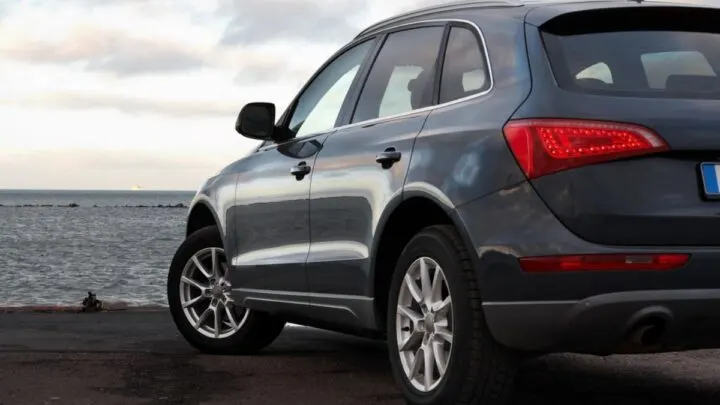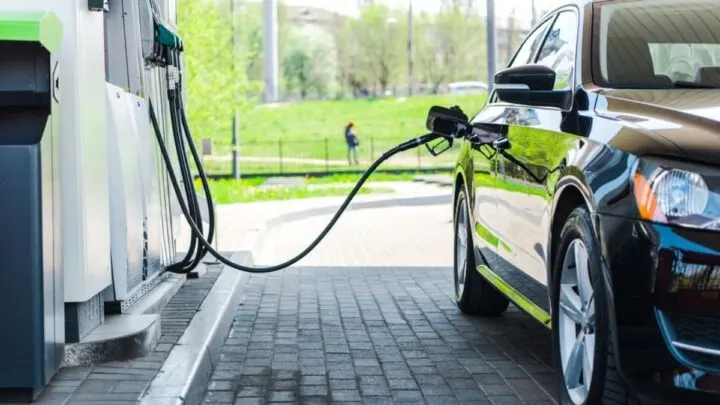- Are You Safer in a Car, SUV, or Truck?
- Car Safety Features: Here’s What You Need to Know
- Are SUVs Safer Than Cars?
- Are Trucks Safer Than Cars?
- SUV vs. Sedan Safety: Are SUVs Safer Than Sedans?
- Which Vehicle Is the Safest Choice: a Car, SUV, or Truck?
- Get Your Car Fixed Following an Accident
- Is An SUV a Truck or Car?
- Is an SUV a Truck or a Car?
- What Is An SUV?
- The Types of SUVs
- Crossover SUVs
- Mini SUVs
- Compact SUVs
- Mid-size SUVs
- Full-Size SUVs
- Why You Should Buy an SUV
- Safety
- Fuel Efficiency
- Practicality
- Final Words on SUVs Being Trucks or Cars
Are You Safer in a Car, SUV, or Truck?
Safety is key, regardless of whether you are driving in a car, SUV, or truck. But, if you are on the lookout for a safe, reliable vehicle, you should weigh the pros and cons of cars, SUVs, and trucks. In doing so, you can find a dependable vehicle that can help limit your risk of accidents.
Car Safety Features: Here’s What You Need to Know
Many car safety features can help drivers keep themselves and others safe on the road, and these features include:
- Seatbelts: Seatbelts save lives, as they prevent drivers and passengers from being ejected from vehicles during collisions.
- Airbags: Airbags inflate during moderate and severe frontal car crashes and help prevent injuries and fatalities.
- Child Safety Seats: Safety seats designed exclusively for children ensure that kids can remain secure and comfortable in a vehicle.
Car safety features can go a long way toward protecting drivers and passengers. At the same time, drivers must consider the different types of vehicles at their disposal, as this can help them determine if a car, SUV, or truck is the best choice to accommodate their safety needs.
Are SUVs Safer Than Cars?
SUVs may be safer than cars in terms of head-on crashes. In one study, researchers found that the odds of death were lower in head-on collisions that involved SUVs than head-on crashes that involved cars.
Are Trucks Safer Than Cars?
Trucks are usually bigger and heavier than cars and will typically push cars back during collisions. Additionally, trucks are often constructed from heavy-duty materials, whereas cars typically consist of lightweight materials. In the event that a truck strikes a car or vice versa, the car will generally suffer more damage during the accident.
SUV vs. Sedan Safety: Are SUVs Safer Than Sedans?
An SUV may be a safer choice than a sedan. This is due to the fact that SUVs tend to weigh more than sedans, which makes them less susceptible to damage during accidents.
Which Vehicle Is the Safest Choice: a Car, SUV, or Truck?
Cars, SUVs, and trucks are designed with safety in mind. Although SUVs and trucks may be less prone to damage in an accident, cars are still safe options for all drivers.
With a safe approach to everyday driving, motorists can minimize the risk of accidents if they drive a car, SUV, or truck. Here are tips you can use to drive safely in any vehicle:
- Follow the rules of the road. Learn the rules of the road and follow them — without exception.
- Avoid distractions. Turn off your smartphone and eliminate all potential driving distractions.
- Drive defensively. Be mindful of other drivers around you and be prepared to respond quickly if a driver stops suddenly or other potential road dangers arise.
- Plan for a safe drive. Adjust your mirrors, seat, and other car controls to ensure you can travel safely; you should also give yourself plenty of time to reach your final destination safely.
- Wear your seatbelt. Wear your seatbelt every time you drive.
- Avoid alcohol or drugs. Do not drive if you have consumed alcohol or drugs that can otherwise impair your ability to stay focused on the road.
Finally, if you are involved in a car accident, try not to worry. In this instance, call the police for immediate help, and police officers will quickly arrive on the scene to ensure that you and anyone else involved in the accident is safe.
Get Your Car Fixed Following an Accident
At Fix Auto, we offer extensive car exterior repair services. If you were recently involved in a car accident, we can help you repair any dents, dings, and scratches on your vehicle right away. To learn more or to request an appointment, please contact us online or call us today at 800.INFO.FIX.
This blog post was contributed by Fix Auto Sports Arena, a leading industry expert and collision repair shop servicing the San Diego County .
Is An SUV a Truck or Car?
Sports utility vehicles, or SUVs, are popular in North America and Europe as family vehicles.
However, classifying them can be challenging, as they come in all sizes but maintain a relatively similar shape and frame.
Some people might argue that they’re cars, while others say trucks. Which is which?
While they may share the same platform, high-performance drivetrains, and spacious interiors, SUVs are not trucks – they’re cars. SUVs are generally classified as cars but also offer features and capacities that blend those of a truck or minivan.
Read on to find out more about how SUVs are classified.
Is an SUV a Truck or a Car?
To determine whether an SUV is a truck or a car, we need first to understand the difference between the two.
A truck is any motor vehicle that by design is built on a body-on-frame platform to transport cargo, perform utilitarian tasks, or transport specialized payloads.
On the other hand, a car is a small-to-medium-sized, four-wheel motor vehicle built on a unibody platform to transport people and cargo.
And as we shall see here, some SUVs are built on a unibody, much like cars, while others are on a body-on-frame platform like trucks.
However, the definition of an SUV varies with region and country. In the USA, some SUVs are classified as light trucks rather than cars, but a vehicle has to be a 2 seater and have a storage area for it to be a truck.
So, as much as there’s confusion about the true definition of an SUV, it’s ideally a car.
What Is An SUV?
An SUV is a car classification that combines the features of road-going passenger cars and off-road vehicles.
Traditionally, they were built on a body-on-frame platform that derives more from the trucks than cars.
They have higher ground clearance, four-wheel drive, and a bigger chassis than cars but lighter than trucks.
Globally, there isn’t a universally agreed-upon definition of an SUV, and you might find Japanese or German SUVs are slightly different from American SUVs.
Some definitions claim that only vehicles built on a light-truck chassis qualify as SUVs, while others say that vehicles with off-roading capabilities qualify.
Therefore, bigger vehicles such as the Jeep Wagoneer, Ford Expedition, Chevrolet Suburban, and Range Rovers are SUVs and not trucks.
Similarly, smaller ones such as the Honda CRV that clearly lean toward passenger cars than trucks are SUVs.
The Types of SUVs
As we’ve seen, the term SUV covers a wide range of vehicles on our roads that are different in structure but similar in function.
Here, we’ll be looking at the various types of SUVs.
Crossover SUVs
The crossover SUV is built on a passenger car (unibody) platform and hence has better fuel economies and comfort.
However, they have fewer off-road capabilities than other SUVs and most lack all-wheel drive (AWD) but have a standard front-wheel-drive (FWD) powertrain.
Furthermore, compared to traditional SUVs, crossovers offer less towing capacity, less ground clearance, and lack 2-speed transfer cases.
Popular crossover SUVs include the 1984 Jeep Cherokee, Mercedes-Benz GLS-Class, Dodge Durango, Range Rover, and BMW X7.
Mini SUVs
The Mini SUV is the smallest car in the SUV segment and is often classified under the subcompact crossovers segment.
They’re built on a subcompact passenger car platform and have less off-roading capabilities than bigger SUVs. On the bright side, you’ll enjoy better comfort, maneuverability, and fuel economies with the mini SUV.
Examples include Mitsubishi Pajero Pinin, Hyundai Bayon, Ford Puma, Nissan Juke, and Škoda Kamiq.
Compact SUVs
A compact SUV is a small SUV larger than the Mini or subcompact SUVs but smaller than mid-size SUVs.
All compact SUVs have a monocoque or unibody design that allows them to be lightweight and have better fuel economies.
Additionally, they have lower ground clearances and centers of gravity, resulting in fewer cases of rollovers.
Examples include Kia Sportage, Nissan Xterra, Land Rover Defender 90, and the Jeep Cherokee.
Mid-size SUVs
From the name, mid-size SUVs are bigger than small-size SUVs but still smaller than full-size SUVs.
Some have unibody passenger car platforms, while others base on compact or mid-size pickup platforms.
Examples include the Ford Bronco, Toyota Fortuner, Jeep Grand Cherokee, and Hyundai Tucson.
Full-Size SUVs
Full-size SUVs are the largest in the SUV segment and have a high towing capacity, larger cargo area, can carry more passengers, and generally have poorer fuel economies.
Their stronghold is that they’re a blend of highway and off-road beasts without sacrificing their aesthetic looks, driveability, and all-wheel drive (AWD).
They have 7-8 seats that are foldable to provide an additional cargo bay area. Additionally, they’re built on a body-on-frame platform paired with a powerful engine.
No matter where you want to go, whether fishing, farming, hiking, on the highway or just off-roading, a full-size SUV always delivers.
Examples include GMC Yukon, Chevrolet Suburban, Mercedes-Benz GLS-Class, Cadillac Escalade, Nissan Armada, Ford Expedition, and Toyota Sequoia.
Why You Should Buy an SUV
SUVs feature state-of-the-art technologies and sophistication, have powerful engines, and are versatile.
Therefore, their popularity is rising tremendously, with many buyers preferring them for family travels.
But it’s not just because they’re spacious, below are valid reasons why your next car should be an SUV.
Safety
According to different studies by the National Highway Traffic Safety Administration (NHTSA) and the Insurance Institute for Highway Safety (IIHS), occupants in a bigger and heavier vehicle have as much as 50% more chances of survival than ones in smaller cars such as sedans.
SUVs are higher, heavier, and have bigger crumple zones that absorb much of the impact instead of transferring it to the car occupants.
Traditionally, buyers shunned SUVs because they had higher but unbalanced ground clearances; hence would mostly roll over during crashes.
However, that’s no longer the case. Modern-day SUVs are much safer, as they have wider wheelbases and are equipped with Electronic Stability Control (ESC) features.
Fuel Efficiency
Small and subcompact SUVs have excellent fuel economy figures, as they are lighter and much more similar to passenger cars.
As a result, manufacturers are tapping into the SUVs’ rise in popularity and producing vehicles with great off-roading capabilities coupled with excellent fuel efficiencies.
Additionally, technological advancement and sophistication have led to better driver-assist features such as adaptive cruise control (ACC). The ACC reduces driver tiredness, lessens drivetrain wear, and improves fuel economy.
Practicality
SUVs have lower fuel economy ratings than sedans, but compensate with greater versatility and practicality.
Also, they have high Gross Vehicle Weight Ratings (GVWR), payload and towing capacities, more head and legroom, and greater ground clearance. It’s no wonder it’s one of the fastest-growing car segments.
Final Words on SUVs Being Trucks or Cars
The continued advancement in vehicle technology and design mean that the lines between various classes of motor vehicles are getting blurrier with each day.
Nowadays, we have SUVs with the same capabilities and platforms as pickup trucks, while others mimic passenger cars.
And whether you’re a novice or an experienced car buyer, distinguishing between passenger cars, SUVs, and trucks is quite challenging.
But remember, look at a vehicle’s individual features rather than its classification. The lines are blurrier nowadays.
Posted on Last updated: June 28, 2023



